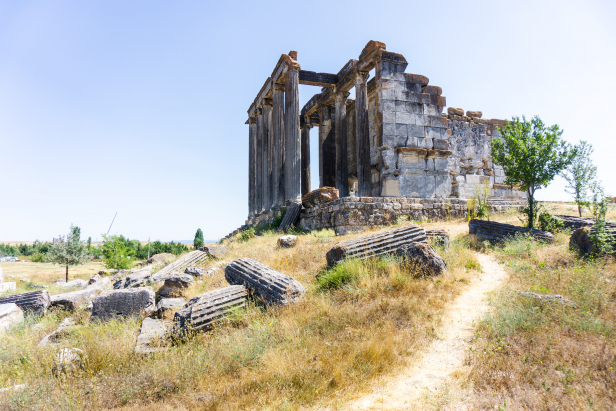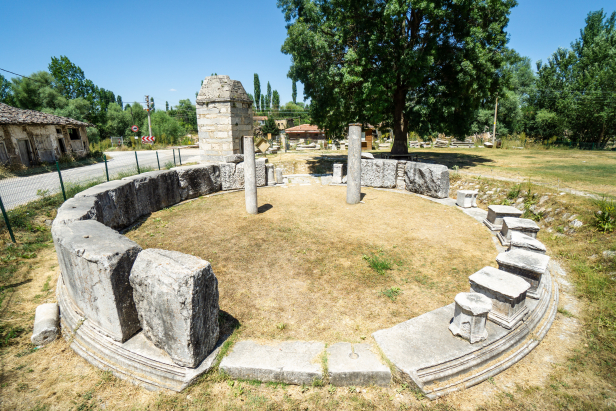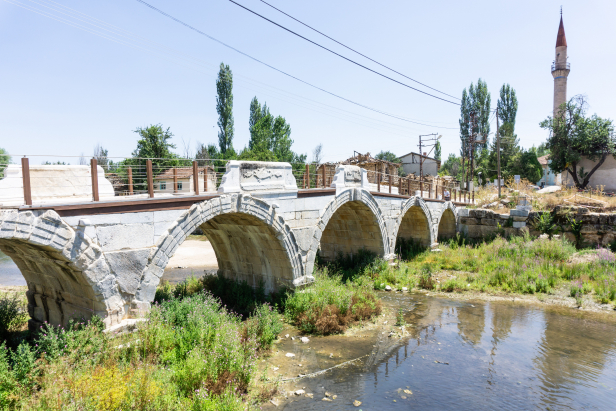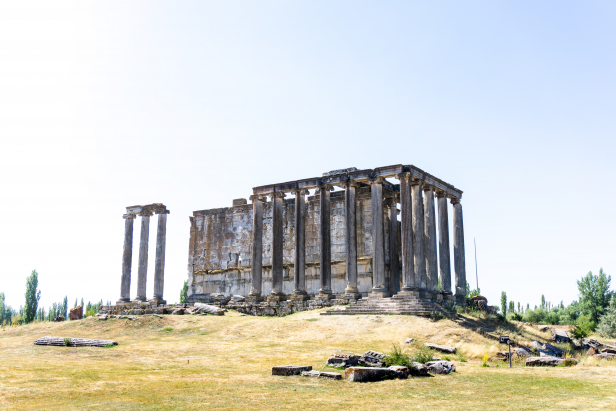Aizanoi Ancient City
Aizanoi Antik Kenti
/ By Josh
Cost: 10TL
Müze Kart Accepted
Great for: Roman History, Classical Architecture, Ancient Ruins, Stock Market Indexes
All throughout the country of Turkey you can find remains left behind by history’s greatest builder: the Romans. The ruins they left behind have managed to maintain an air of splendor and beauty despite the passing of nearly two thousand years. Archaeologists (and the odd enterprising local) have worked for decades to clear away the debris of centuries to allow visitors to get a sense of that ancient beauty.
Aizanoi, in a little visited region of Turkey, finds itself on the UNESCO Tentative list simply because its superb ruins have managed to defy time and remain in amazing condition without needing to be rebuilt.

The oldest remains of human settlement at the site of Aizanoi date back to around 2500 BC, though little is known about the city until the arrival of the Romans who made the city an important regional center. The area’s agricultural wealth and location near a crossroads earned it the attention of the Romans who undertook massive building projects here, expanding the city on both banks of the Rhyndokos river (now the Koca Çay).
Subscribe to The Art of Wayfaring
The crown jewel of Aizanoi is the Temple of Zeus. Crowning a low hill and set atop a set of stairs the temple stands imposingly above everything around it. With many of its ionic pillars and architraves still standing with the inner cella (solid walled inner portion of the temple) still partly in tact and bearing numerous inscriptions, the temple of Zeus is one of the best preserved classical temples in the entire Greco-Roman world. How it appears now is how it remained untill an earthquake in 1970 knocked down some of the pillars, which were then re-erected.
The temple was commisioned under emperor Domitian and completed in 125 AD under Emperor Hadrian. It conisted of a 35×53 meter space with a total of forty eight pillars, 16 of which still stand today. When it was first built, the temple was capped with a pediment (triangular gable-ended roof) that would have been ornately decorated with reliefs carved in fine marble. Fragments of this ornamentation can be seen across from the temple where you’ll notice many of the fragments have been carved with images of eagles, an animal associated with the god Zeus.
In the inner chamber a great statue of Zeus would have once been placed, though no trace of it has been found. During the Byzantine era the statue would have been removed when the temple was used as a church for centuries. According to legend, the city of Aizanoi was founded by Azan, believed to be the grandson of the god Zeus himself.
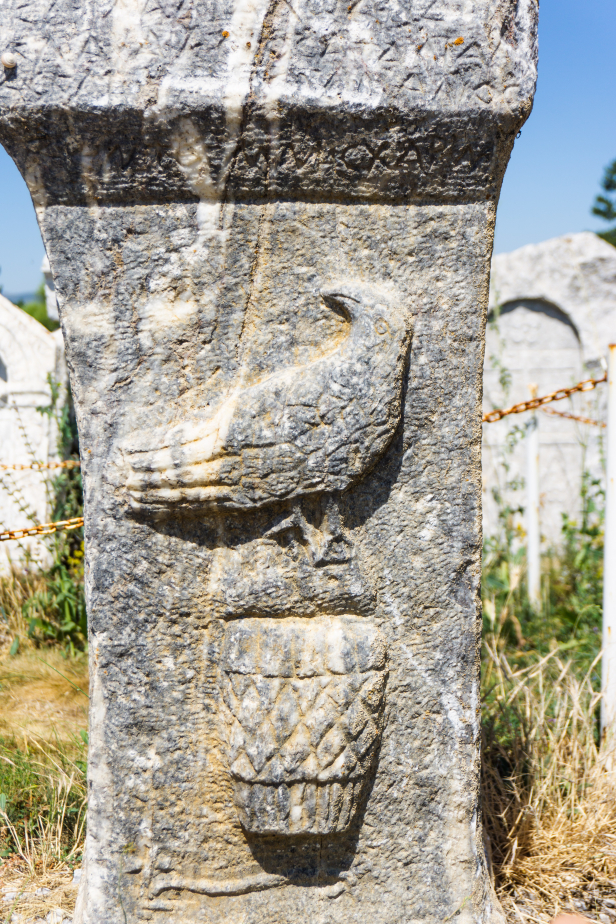

If you look carefully at the walls of the cella (inner chamber) you will notice the crude etchings of mounted soldiers, their spears often visibly held aloft. These are thought to have been made by the Çavdar Tatars, a Turkic people who lived here in the 13th century and used the temple as a fortress. The name of the town today is Çavdarhisar meaning ‘fortress of the Çavdars’.

Below the Temple of Zeus is a massive vaulted chamber, likely a temple to Cybele, the ancient Anatolian mother goddess of the Phrygians.
A short distance past the Temple of Zeus is the first of a pair of Roman Baths, one of which still has a beautiful mosaic in its floor, though it is often covered to protect it from the elements.
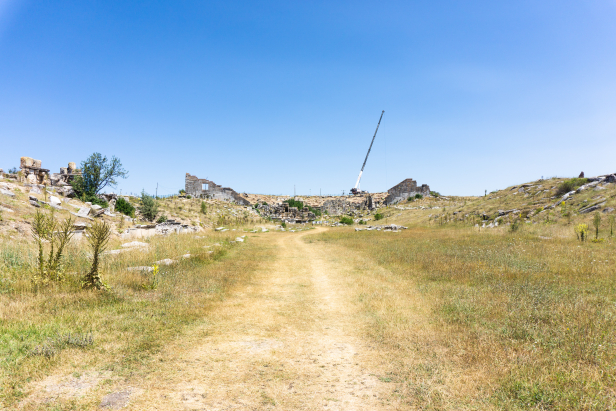
A couple hundred meters past the Roman Bath are the uniquely combined stadium and theatre. This strange combination has the length of the stadium run directly into the theatre with the stage and scaena separating the two. This is the only known example of this combined arrangement.
Construction began in the first century AD and continued until the third as the complex grew and expanded. The final product was built to hold 13,500 spectators in the stadium and 20,000 in the theater. Today restoration work is underway in the theater, and so the area is closed to visitors, though you can enter the stadium and see the theater from the outside.
Another interesting claim to fame, Aizanoi is the first known place from which inflation was calculated and used to set standardized prices to attempt to curb its effects on the economy. Engraved in the walls of a small round market building, is a price edict dating to 301 AD, dictating the price of various goods and services.
Next to the market are the remains of a colonnade street and one of Aizanoi’s two remaining Roman-era bridges. Excavation work is continuing along the riverbank below the market, unearthing what seems to be marble walls designed to contain the river where it passed through the midst of the city.
The best place to see some of the finds unearthed in Aizanoi is the Kütahya Archaeology Museum where the Amazonmachy, an ornate sarcophagus depicting a battle with the Amazonians, is on display.
How To Get There
Public Transit/Taxi
The town of Çavdarhisar gets regular bus service from the city of Kütahya, leaving from the Kütahya bus terminal (otogar). Busses will take you to the Çavdarhisar town center, a little under a kilometer away from the Aizanoi ruins. If the walk is too far taxis are available in Çavdarhisar.
Car
As Çavdarhisar is a bit out of the way, and the Aizanoi ruins a bit scattered, a car is a great way to explore Aizanoi. Çavdarhisar sits along the D240 highway, 55 kilometers south of Kütahya city.
Leaving Kütahya head East on the D650 then turn right onto the D240. Entering the town of Çavdarhisar brown signs will lead you to Aizanoi which will be on your right.
From Uşak head West on the E96 highway, then turn right onto the D595 highway north. 36 kilometers later you will merge right onto the D240, following this you will arrive in Çavdarhisar 46 kilometers later. Follow the brown signs to the left for Aizanoi.
For more about car rental and driving in Turkey make sure to read our full drivers guide.
Where To Stay
Çavdarhisar has some rather limited, though quality, hotel options in the town center. Other than this the cities of Kütahya and Uşak have a much broader selection of hotels.
Other Tips
Planning on visiting Aizanoi? Make sure to check out what other sights are in the region!
Subscribe to The Art of Wayfaring
Have any tips or info to add? Spot any mistakes? We’d love to hear about it.
